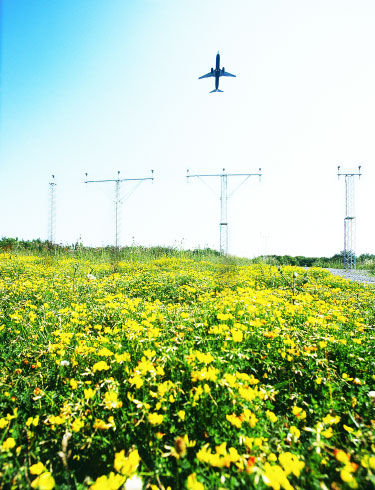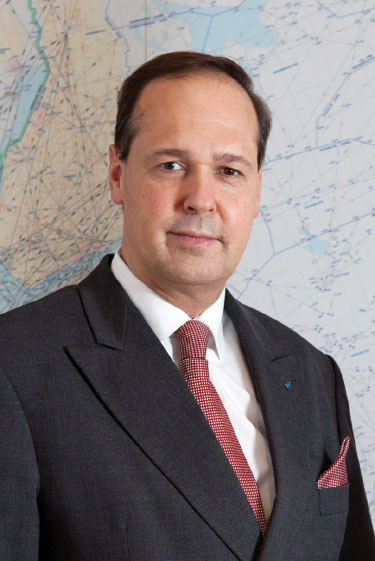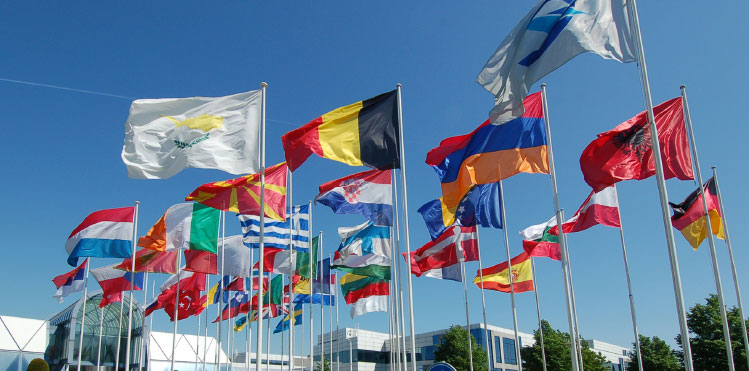
By Frank Brenner, Director General of EUROCONTROL.
According to the latest EUROCONTROL Challenges to Growth study, Europe would need an equivalent of nine additional runways in the next 20 years. The same source forecasts that there will be 20 airports operating at the same levels as Heathrow currently does. Are we prepared for that?
For congested airports, with an appreciable proportion of large aircraft types in their traffic, or who will see this proportion increase, the European “Re-categorisation of ICAO Wake Turbulence Separation Minima on Approach and Departure” (RECAT-EU) solution is a way to increase runway throughput and efficiency, since it is directly interconnected with the separation minima applied.
The ICAO provisions have been fixed with three categories of aircraft (Light, Medium and Heavy) for over 40 years. Based on aircraft maximum take-off weight, this categorisation incorporates a range of different sized aircraft into each category, and as such leads to over-conservatism. The existing categorisation had been questioned even more with the introduction of the A380 into the ATM world. Meanwhile, EUROCONTROL together with its stakeholders has been researching to gain more knowledge about the wake vortex behaviour in the operational environment. The focus
was both on wake generation and the effect of wake encounters on the following aircraft.

Frank Brenner, Director General of EUROCONTROL. A comprehensive safety case had been developed by EUROCONTROL, covering a wake turbulence risk assessment based on more than 100,000 operational wake measurements.
The result of this work, RECAT-EU divides the existing ICAO Heavy and Medium categories into two (Upper and Lower), and formally creates a Super Heavy category, which includes the A380. This new categorisation allows reduction in separation by one nautical mile (Nm) for followers behind weaker wake generator types, or for followers with higher wake resistance, and a reduction of two nautical miles when both are combined. Safety benefits are also provided for most vulnerable aircraft types, by increasing some separation minima and/or change of category grouping.
A comprehensive safety case had been developed by EUROCONTROL, covering a wake turbulence risk assessment based on more than 100,000 operational wake measurements. In October 2014, the European Aviation Safety Agency (EASA) confirmed that the safety case provides assurance that the RECAT-EU wake turbulence separation scheme can be used by Member States as a basis to update the current schemes, meaning that we are now ready to move to deployment.
During the first quarter 2016, Paris-Charles de Gaulle Airport will become the first European airport to operate RECAT-EU. The procedure itself is rather simple to deploy and it is very cost-efficient, requiring a minimum of technology change. Basically the local flight plan processing system needs to be updated so the controller would have the new aircraft category on the flight strips and on their traffic surveillance display. And, as suggested from Controller feedback collected during ATC real-time simulation sessions, RECAT-EU should have a positive impact on the controller workload and offer more flexibility to manage the traffic.
The benefits assessment shows that major European airports can achieve around a 5% increase in capacity during peak traffic periods with the deployment of the RECAT-EU. This represents, for an airport like Paris-CDG, up to 20 additional movements per day available in peak times when traffic is constrained.
The gain in runway throughput can increase further up to 8% as the overall fleet mix is expected to change towards the larger aircraft. RECAT-EU also delivers benefits on operational resilience with reduction in delay recovery and in cumulative delays from adverse conditions. The aggregation of these benefits through deployment at multiple airports is, of course, of interest to the Network Manager.

EUROCONTROL has assessed and identified 12 congested airports in Europe that could benefit significantly with the RECAT-EU deployment for arrival and/or departure traffic.
To this end, EUROCONTROL has assessed and identified 12 congested airports in Europe that could benefit significantly with the RECAT-EU deployment for arrival and/or departure traffic. Following expression of interest, the Agency is already in contact with some of them, expecting that from four to six airports would introduce the new procedures within the next five years.
EUROCONTROL is also working on further evolutions and will soon deliver a concept for using pair-wise separation minima (known as RECAT-2) as well as specifications for the ATC support tool needed for such operations. This tool will also support the application of time-based separations, enabling a further optimisation of runway throughput.
Airport traffic is growing again. The ATM network needs a safe, cost-efficient and quick solution such as RECAT-EU that will bring runway throughput enhancement benefits both for airports and the overall network.







